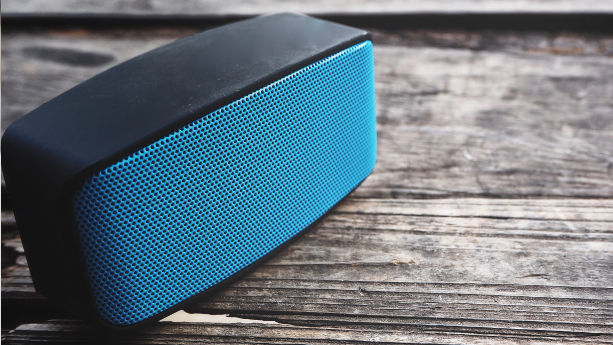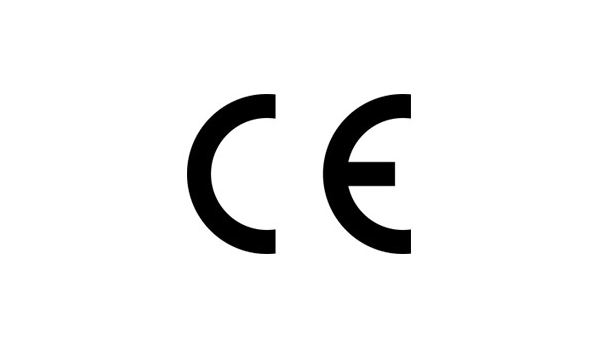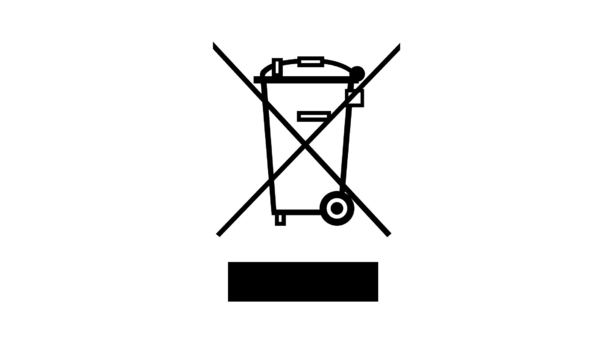
Planing to import and sell Bluetooth speakers in the European Union? In this guide, we explain what you must know about RoHS, Radio Equipment Directive, REACH, EN Standards, DoC, CE marking and other relevant regulations applicable to Bluetooth speakers, and other wireless audio products.
Mentioned Products
- Portable Bluetooth speakers
- Wi-Fi Enabled Bluetooth speakers
- Bluetooth hands-free speakers
- Stereo headsets
Content Overview

FREE CONSULTATION CALL (US, EU & UK)
- Request a free 30-minute call with Ivan Malloci to learn how we can help you with:
- Find product requirements
- Certification and labeling
- Lab testing
RoHS
RoHS (Restriction of Hazardous Substances Directive) is necessary for Bluetooth speakers sold in the European Union, as it regulates the use of specific hazardous substances in electronic products. Here are some examples of restricted substances covered under RoHS:
- Cadmium (Cd)
- Lead (Pb)
- Mercury (Hg)
- Bis(2-Ethylhexyl) phthalate (DEHP)
- Hexavalent chromium (Cr6+)
- Polybrominated biphenyls (PBB)
- Polybrominated diphenyl ether (PBDE)
- Butyl benzyl phthalate (BBP)
- Dibutyl phthalate (DBP)
- Diisobutyl phthalate (DIBP)
Those restricted substances can be found in the part of batteries, metal coatings, and solder. Your Bluetooth speakers must not contain an excessive amount of restricted substance, for example, the level of cadmium (Cd) in your Bluetooth speakers must not exceed 100 ppm (parts per million), or 0.01%.
RoHS Components
RoHS applies to every electrical or electronic component of your product. Your suppliers must only use RoHS compliant components for assembly or manufacturing processes. Therefore, you shall instruct your suppliers about RoHS compliance before mass production.
RoHS Lab Testing
You must either request RoHS test reports from your supplier or book third party lab testing for Bluetooth speakers. RoHS is on a per-component basis and starting from $10.
Some RoHS testing companies such as SGS, QIMA and Bureau Veritas, provide different methods to ensure that your Bluetooth speakers are compliant. For example:
- Non-destructive Analysis
- Wet Chemical Analysis
- XRF Screening
Here are some more RoHS testing companies:
- Intertek
- TUV
- CMA Testing
- ATS Lab
CE Mark
The CE mark is required for products subject to the RoHS Directive, including Bluetooth speakers. The products must carry a visible and permanently affixed the CE mark on the product and its packaging.
RoHS Symbol
RoHS marking has no legal meaning or standing by itself. Therefore, the RoHS mark is not required for electronic products (e.g. Bluetooth speakers) sold in the European Union.
However, some manufacturers choose to add a RoHS symbol to indicate that a specific component is RoHS compliant.
Risks
Bluetooth speaker manufacturers in China, and elsewhere, don’t exclusively use RoHS compliant ICs, PCBs, connectors and other components. As such, it’s critical to inform your supplier that the Bluetooth speaker must only be assembled using RoHS compliant components. Further, you should also inform them that the product will be subject to lab testing.
Radio Equipment Directive (RED)
The Radio Equipment Directive (RED) covers radio-electric equipment, including Bluetooth speakers, placed on the EU market. RED establishes a regulatory framework to ensure conformity with essential requirements for safety and electromagnetic compatibility.
As such, your Bluetooth speakers must be compliant with RED before entering the EU market.
RED Covered Devices
- Wi-Fi Enabled Bluetooth speakers
- 3G Enabled Bluetooth speakers
- 4G/LTE Enabled Bluetooth speakers
- 5G Enabled Bluetooth speakers
- Bluetooth speakers with RFID Devices
RED Test Reports
We recommend that you book RED lab testing for your Bluetooth speakers before importing to the EU. Note that you can normally not use supplier test reports, including DoCs and CoCs which are not backed up by a verifiable test report.
Established testing companies such as Bureau Veritas, Intertek, SGS or TUV, provide RED lab testing for Bluetooth speakers. They will usually help you assess other applicable standards as well.
RED Testing Costs
RED test costs can differ greatly according to the various types of Bluetooth speakers. In general, prices range from hundreds to several thousands of dollars depending on the complexity (e.g. number of components) of the speakers.
CE Mark
CE marking is required for all products that are within the scope of RED. The directive covers all wireless electronic devices, including Bluetooth speakers. Also, you should prepare other documents, such as the Declaration of Conformity (DoC), user manual and technical file.
CE Marking

Since at least two CE directives apply to Bluetooth speakers, therefore you must carry the CE marking on your Bluetooth speakers to indicate conformity. The CE marking must be visibly, legibly, and indelibly affixed on the Bluetooth and its packaging.
CE label file
Importers shall create a CE label file in .ai or .eps format, then submit it to the supplier for the manufacturing process. The CE label file shall include the information as below:
- Dimensions
- Position
- Color
- Print type
Note: It is also a good practice to include the CE mark in the packaging and user manual files.
Product Traceability
You must attach a permanent traceability code on the Bluetooth speaker and its packaging, which shall include the following information:
- Indication of Name and Address of Manufacturer
- Indication of Name and Address of Importer
- SKU
- Manufacturing date
- Production facility
- Country code
Example
- Bluetooth Speakers Limited
- BT01A
- June, 2020
- Dongguan
- China (CN)
Code: BT01A-062020- DG-CN
CE Documentation
The CE marking is not the only requirement under CE directives. To ensure that your Bluetooth speakers are compliant, you also need to issue the Declaration of Conformity (DoC), User Manual and Technical File before importing and selling in the European Union.
Declaration of Conformity (DoC)
The DoC is a declaration issued by either importers or manufacturers, to claim that the product meets the essential requirements of applicable directives. The DoC shall include the information as below:
- Produce identification/SKU (e.g. Bluetooth speakers model A)
- Product features
- Name and address of the manufacturer/importer
- List of applicable EN standards or directives
- Responsible individual
The DoC is often requested when importing and selling in the EU. Different parties including government, retailers, and the consumer may request DoC for compliance checking.
User Manual
You are also required to provide a user manual for Bluetooth speakers. The user manual shall include the information as below:
1. Instructions on how to install the product
2. An overview of the relevant parts and part names of the product
3. Safety instructions
4. Instructions on how to use the product
5. Instructions on how to recharge and/or refill the product and
6. Instructions on how to dispose of the product in an environmentally friendly manner
You can also include all compliance making (e.g. CE mark and WEEE mark) in the user manual, in case there is no printing space on your products.
Technical File
The technical file demonstrates how the product was assembled, and as such is often useful to show compliance with the CE requirements. It shall include design specifications, material, labels, and packaging.
You shall create a technical file with the information below:
- Bill of materials (e.g. List of Bluetooth speakers material)
- Design specification
- Label files
- Packaging files
- List of applicable standards and directives (e.g. RoHS, RED)
- Test reports
- QC reports
- Risk assessment
Test Report
You must attach the test reports to the technical files. Also, the test result should comply with the CE Directive requirements as stated in the DoC.
WEEE Symbol

The WEEE Directives applies to Bluetooth speakers for addressing the environmental impacts of unwanted waste of electrical and electronic equipment. The WEEE symbol indicates that the product is a separate collection for WEEE, and the symbol must be printed visibly, legibly and indelibly to the product and its packaging.
WEEE label file
You need to self-create a WEEE symbol label file, better if in .ai or .eps format, then submit it to your supplier before mass production. We suggest that you also include the WEEE symbol in the packaging and user manual files as well.
REACH
The REACH regulation addresses the use of chemical substances and their potential impacts on both human health and the environment. REACH also sets limits on specific hazardous substances in all consumer products sold in the EU.
Notice that REACH doesn’t apply specifically to electronic components, but all materials. As such, the plastic casing and other materials used to produce Bluetooth speakers must be compliant.
Here are some restricted substances examples under REACH:
- Lead
- Cadmium
- Mercury
- Pentachloroethane
- Acrylamide
- Benzene
Substances of Very High Concern (SVHC)
The candidate list of SVHC provides information on restricted substances and requirements under REACH.
The European Chemicals Agency (ECHA) updates the list on an irregular basis. It could be difficult for importers to keep track of these restricted substances. Therefore, we recommend that you seek help from testing companies to assess REACH compliance.
Lab testing
Third-party lab testing is the only way to verify the level of restricted substances in your Bluetooth speakers. Many established testing companies such as SGS, TUV, and QIMA, provide REACH testing for Bluetooth speakers.
REACH compliance starts at an early stage. You must instruct your supplier about REACH, and book third-party testing before entering the EU market.
Testing companies
Here is an overview of testing companies that provide REACH test:
- QIMA
- Bureau Veritas
- Intertek
- SGS
- TUV
You can find more companies in this guide.
Costs
REACH testing costs can differ from various types of Bluetooth speakers. It generally starts at $200 per material, and it can be increased due to product type and colors.
Learn more
You can find more information about REACH lab testing in this guide.
Risks
As with RoHS, you should not assume that your manufacturer uses REACH compliant plastic and other materials. As such, it’s essential to both inform your supplier to only procure REACH compliant materials, while also sending samples to a third-party testing company.
Directive 94/62/EC: Packaging Regulations
When importing and selling Bluetooth speakers to the European Union, you must also ensure that the packaging is compliant. Here we summarize the packaging materials and waste requirements in the European Union as below:
Heavy Metals Restrictions
Directive 94/62/EC regulates the heavy metal content in packaging. Your Bluetooth speakers’ packaging must not contain an excessive amount of certain hazardous metals such as Lead, Cadmium, and Mercury.
Third-party lab testing can help you to verify if your packaging material is compliant. The testing is not limited to heavy metal but any other restricted substances under Directive 94/62/EC. Testing companies such as Intertek, SGS, and TUV offer packaging materials testing services to ensure compliance.
Additional Packaging Information
1. Packaging design and material should facilitate and simplify the process for collection, reuse, and material recycling.
2. Product labeling requirements (e.g. CE mark, WEEE mark) should be printed on the packaging as well.
Amazon Europe Compliance Requirements
If you are planning to sell Bluetooth speakers on Amazon, you need to be aware of its compliance policies about regulations, directives, certification, and labeling requirements.
You must at least ensure that your Bluetooth speakers are compliant with all mandatory requirements, and that all labels and documents are in place. For example, CE marking, RED and RoHS test reports, DoC, and technical files.
We have seen some cases in which Amazon even requires sellers to comply with voluntary standards. Therefore, you must be well-prepared in order to get approval from Amazon. We suggest that you read the Bluetooth speakers requirements in the Amazon Seller Central, and seek help from testing companies for compliance documents.
How does Amazon check product compliance?
It mostly depends on the documents that you provide. Amazon may request DoC, test reports, certificates or any other relevant document to verify compliance.
Note that they do not check product compliance on a regular basis. Instead, they may contact you for requesting those documents at any time.
What can happen if we sell non-compliant Bluetooth speakers on Amazon?
Amazon will not accept any non-compliant products sold on its platform. Amazon reserves the right to remove your whole product listing, and they can suspend your Amazon account if necessary.
















Before starting with the tips we want to briefly explain what a wireless speaker is and what types exist so that you know the advantages and disadvantages of each one.